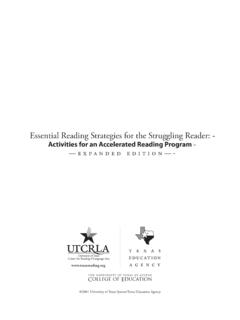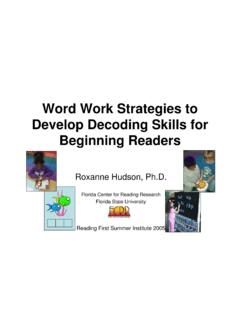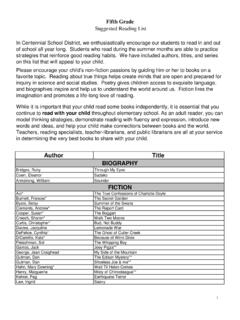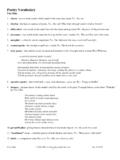Transcription of Fry Word Lists: What they are about and how to use them.
1 Fry Word lists : what they are about and how to use them. This list of 600 words compiled by Edward Fry contain the most used words in reading and writing. The words on the list make up almost half of the words met in any reading task. Good readers decode words so that they are said "instantly", therefore, assuring the automaticity essential to comprehension. The words are divided into six levels, roughly corresponding to grade levels; then into groups of twenty-five words , according to difficulty and frequency. Each level should be taught and assessed sequentially, with the goal of increasing fluency on these high frequency words to the point that parallel processing can occur. To determine where to start instruction, administer a word recognition test. Have the student read the underlined words aloud, and continue until s/he makes five or more errors in a group of 25 words . This indicates a frustration level, and instruction should begin on the previous list.
2 Note the kind of errors the student makes when s/he mispronounces words so that there can be instruction on specific skills. Teach decoding the unknown words by phonic, structural, or sight analysis. Continue teaching and testing until both rate and accuracy are at "instant" recognition level. The criteria for this is being able to read 100 words in ONE minute with 95% accuracy in the primary grades, and 200 words per minute in intermediate grades. It should be noted that a "ball-park" estimate of independent, instructional, and frustrational reading levels could be determined by where the student begins to make errors in reading the word lists --using the general criteria for word recognition levels as 95% is independent, 90% is instructional, and less than 90% indicates frustration level. Being able to decode individual words is essential to fluency in reading , but teachers must follow up with phrase and sentence reading . When words are used in meaningful context, fluency is improved as well as comprehension.
3 Because of the high utility of the words in print, the words can also be used as basic spelling lists AFTER reading is mastered. For application in both decoding and spelling, patterns in words have been noted at the bottom of the first levels of first levels of words lists , so extended practice on rimes and other generalizations can occur. For the purpose of increasing fluency beyond individual word recognition, these high-frequency words have been underlined and put into short three-word phrases. Students can improve both speed and accuracy as they practice reading these phrases. There are words in tow columns with a 95% accuracy and within ONE minute. In phrase reading , 150 words pretest should be given to make sure students CAN read the phrases correctly before emphasizing fluency. Students can have their own individual word/phrase lists at their desks and time built into the schedule for them to practice reading them aloud to another student who monitors both the reading and notes the time.
4 It is important that ALL students begin on the first level so success is established before moving on to more difficult words /phrases. When the student has had his/her accuracy and rate validated by two students, s/he is ready to pass off the level with the teacher. Two extension activities might include having students select several phrases and write complete sentences with them, being held for good penmanship, punctuation, and content. Students could also find phrases that tell where (by the house), when (in the morning), who (a tall girl) , what (a big box), as well as other comprehension tasks.









